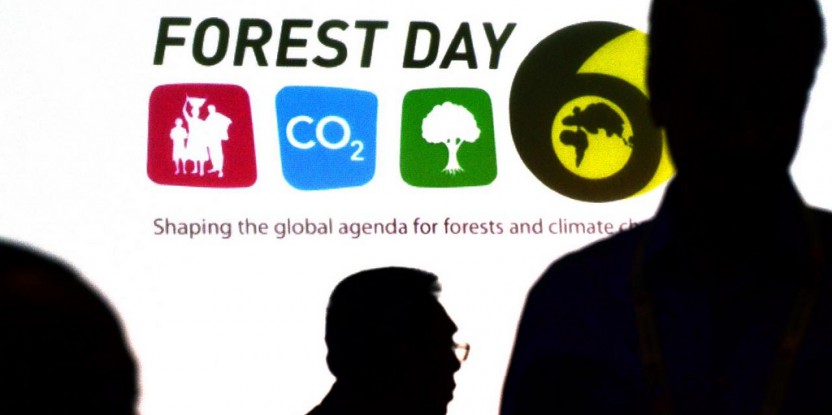On 2 December 2012, I shall have the honour of opening the sixth edition of Forest Day at the 18th Conference of the Parties to the U.N. Framework Convention on Climate Change (UNFCCC COP18) in Doha. This will undoubtedly be another inspiring and well-attended event on the fate of forests and the future of forestry. Forest Day has been organised annually by CIFOR and the Collaborative Partnership on Forests since COP13 in Bali in 2007, coinciding with the highest attention to forests that the world has ever seen. Never before have so many heads of state engaged in forests and such generous international contributions been made to this end. I believe we can safely say that the attention to forests has been permanently raised over the past half-decade. We can be proud that Forest Day and all contributing partners have played a significant role in this.
Forest Day 6 will, however, be the last one that is organised during the UNFCCC COP. The mission to put forests on the climate change agenda is arguably completed. The mission to deliver sustainable, climate-smart and equitable growth in the green sectors has barely started. To succeed, we need holistic approaches and we need to tear down sector boundaries that obscure our view and limit the set of solutions. We are therefore looking forward to building on the Forest Day experience, joining forces with a wider range of partners in agriculture and rural development, and holding a Landscape Day at the UNFCCC COP next year.
This is not an easy step to take. Since the first Forest Day, more than 5,000 forest stakeholders from more than 100 countries have attended the event. This includes nearly 1,000 UNFCCC negotiators and more than 400 journalists. The more than 300 speakers have included a president, ministers, Nobel Laureates, indigenous leaders and global experts and scientists. More than 100,000 others have participated online. Surveys have shown that over 90% of participants thought Forest Day was ‘successful’ or ‘very successful’. Clearly, Forest Day has become one of the defining events on forests and forestry on the international scene. So, why change a winning concept?
There are at least two good reasons that I would like to highlight.
First, the climate change negotiations are moving on. Past years have led to successful agreements on REDD+, albeit in a context of much less successful results at higher levels. Step by step, the various pieces of REDD+ are being defined and agreed. A reasonable expectation in Doha this year is that texts on national forest monitoring systems and measurement, reporting and verification (MRV) will be concluded, and that issues on drivers will move forward. Discussions on how to include multiple benefits in the equation are interesting and point to the context in which REDD+ needs to be implemented. As REDD+ proceeds and focuses more on implementation, we see a diminishing demand for a high-level event that focuses on forests per se, and an increasing demand for contributing in other ways, in particular through relevant and focused research.
Second, the next big thing on the UNFCCC horizon is the new climate agreement to be put in place by 2015. For this process we believe it is key to, again, raise the importance of the green sectors and make sure that they are well attended to in the UNFCCC workplan. We have seen the struggle to bring agriculture into the negotiations over past years, with quite meagre results, possibly because the debate has been dominated by environmental perspectives on natural resources. The Convention should consider the management and economics of natural resources more seriously, not only because they contribute a very high proportion of emissions, but also because the green sectors and long-term food security will be the most affected by climate change and because agriculture and forestry remain key for the livelihood of billions of people. We believe that a landscape platform can help the Convention focus more on these issues.
I have said earlier that it is time for forestry to come out of the forest. Moving on from Forest Day to a Landscape Day is an excellent example of what needs to happen. There are no sharp boundaries between forests and the wider landscape. Not geographically, not economically, and not for sustainable development.
Let me finish with an acknowledgement of all those that have worked hard to make Forest Day a success over the past years. We will no doubt have an opportunity to celebrate in Doha next week and discuss the next phase, with landscapes as the focus for the benefit of UNFCCC, but also look at how we can continue to develop the Forest Day concept in other forums.
We want you to share Forests News content, which is licensed under Creative Commons Attribution-NonCommercial-ShareAlike 4.0 International (CC BY-NC-SA 4.0). This means you are free to redistribute our material for non-commercial purposes. All we ask is that you give Forests News appropriate credit and link to the original Forests News content, indicate if changes were made, and distribute your contributions under the same Creative Commons license. You must notify Forests News if you repost, reprint or reuse our materials by contacting forestsnews@cifor-icraf.org.
